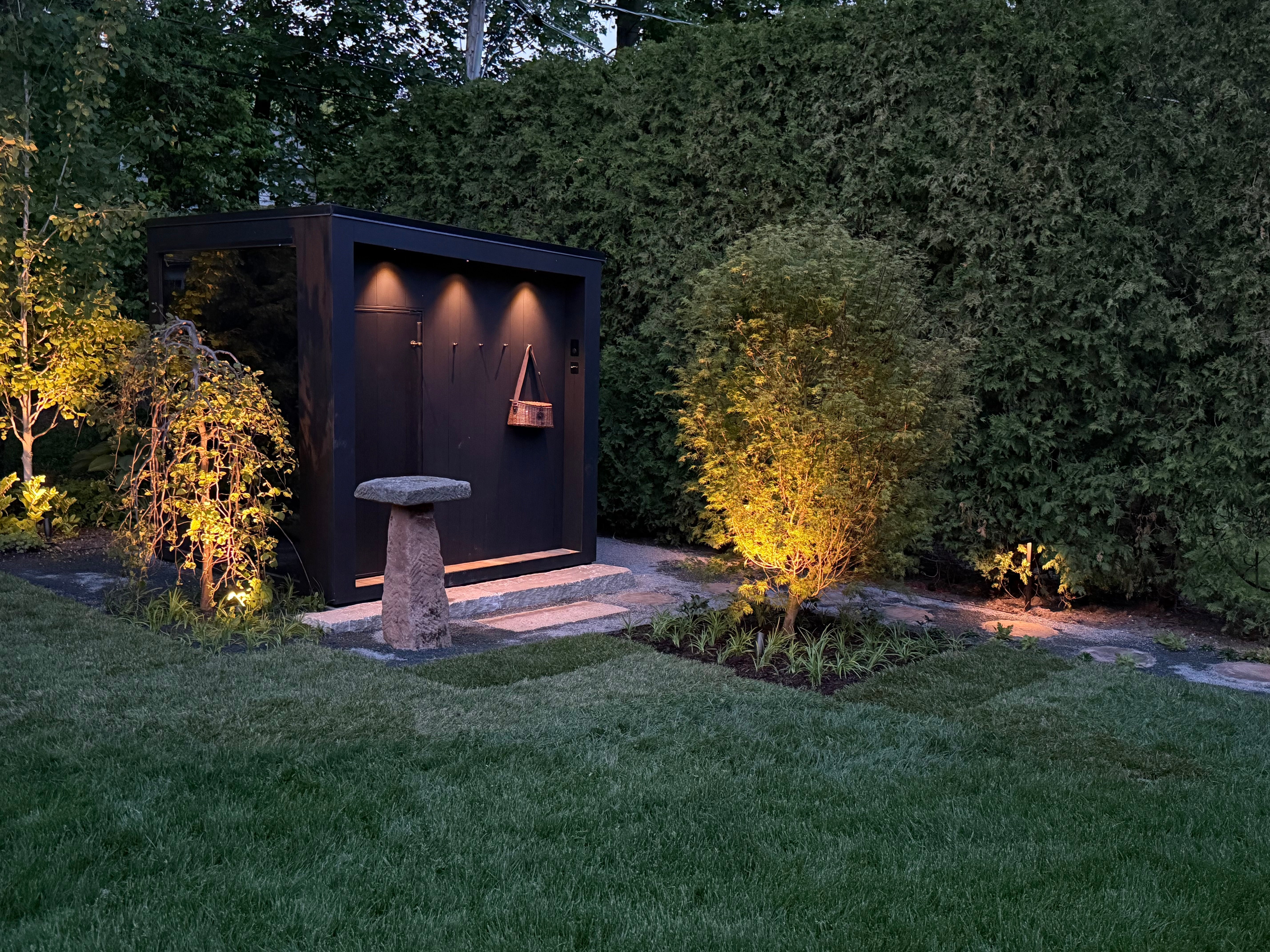
When we decided to visit Finland to understand authentic sauna culture, we stayed with several Finnish friends who graciously opened their homes to us. What we discovered completely changed how we think about indoor versus outdoor saunas in America.
What We Learned in Finland
Our friend Antti has a beautiful wood-fired sauna in his basement. Martti's house features a sleek electric sauna. Both are incredible spaces that put most American "saunas" to shame. But here's the key difference: their entire homes were built for the sauna from day one.
Antti's basement sauna sits behind concrete walls designed to handle moisture and heat cycles. The ventilation system was engineered specifically for sauna use, with proper air intake and exhaust that doesn't fight against the home's HVAC system. Martti's electric sauna integrates seamlessly with his home's electrical and ventilation infrastructure because it was all planned together from the foundation up.
These aren't retrofits. These aren't afterthoughts. These are purpose-built sauna installations that work because every aspect of the home was designed to support them.
The American Reality: Retrofit Nightmares
Back in the US, we're doing something completely different. We're trying to shoehorn saunas into spaces that were never designed for them. That spare bedroom, basement corner, or bathroom addition becomes a moisture and maintenance nightmare because American homes aren't built with saunas in mind.
Let's be honest about what indoor sauna retrofits really involve:
Ventilation Challenges Your home's HVAC system wasn't designed for a 180-degree room that generates massive humidity swings. You're essentially fighting against your existing airflow patterns and building codes that treat saunas like afterthoughts.
Moisture and Mold Risk Even with vapor barriers and waterproofing, you're introducing extreme humidity cycles into your home's structure. Wood framing, drywall, and insulation weren't meant to handle these conditions long-term. The result? Hidden moisture problems that can take years to discover.
Cost Reality Indoor retrofits require electrical upgrades, specialized ventilation systems, extensive waterproofing, permits, and often structural modifications. You're looking at 30-50% higher costs compared to outdoor installations, and that's before you encounter the inevitable "surprises" during construction.
The Social Factor Here's something we don't talk about enough: indoor saunas are inherently antisocial in American culture. "Hey, want to come sweat in my basement?" doesn't have quite the same appeal as inviting friends to a beautiful outdoor sauna space. Indoor saunas feel private and confined. Outdoor saunas become destinations.
Why Outdoor Saunas Just Work
Outdoor saunas eliminate every problem we just mentioned:
Natural Ventilation Fresh air intake and exhaust work effortlessly without fighting existing systems. No complex engineering required – just proper sauna design that breathes naturally.
Zero Home Integration Issues Moisture stays outside where it belongs. No risk to your home's structure, no hidden problems developing behind walls.
Straightforward Installation Level pad, electrical run, done. No permits for home modifications, no HVAC integration, no structural engineering.
The Complete Experience Stepping out of intense heat into fresh air, seeing the sky, feeling connected to nature – this is what sauna was always meant to be. It's a ritual, not a room.
Built for Gathering Outdoor saunas naturally become social spaces. They're destinations that friends actually want to visit, not awkward invitations into your home's private spaces.
The Finnish Lesson
Our time in Finland taught us that successful indoor saunas require building the entire home around the sauna from the very beginning. Antti and Martti's saunas work because everything – from concrete walls to ventilation systems to electrical infrastructure – was planned as an integrated system.
Unless you're building a new home specifically designed for a sauna, you're fighting an uphill battle with physics, building codes, and basic common sense.
Stop Overthinking the Retrofit
The Finns didn't put saunas in separate buildings because they lacked indoor plumbing or central heating. They understood that sauna is meant to be a purposeful, separate ritual that connects you with the elements and creates space for genuine gathering.
If you're considering a sauna, don't get caught up in trying to make your existing home work for something it wasn't designed to handle. Go outdoor. Embrace the experience as it was meant to be.
Your friends will thank you, your home's structure will thank you, and your wallet will definitely thank you.
Ready to explore outdoor sauna options? We'd love to help you create a space that honors the authentic sauna tradition while fitting perfectly into your American lifestyle.


Comments (0)
Back to Nightjar Journal